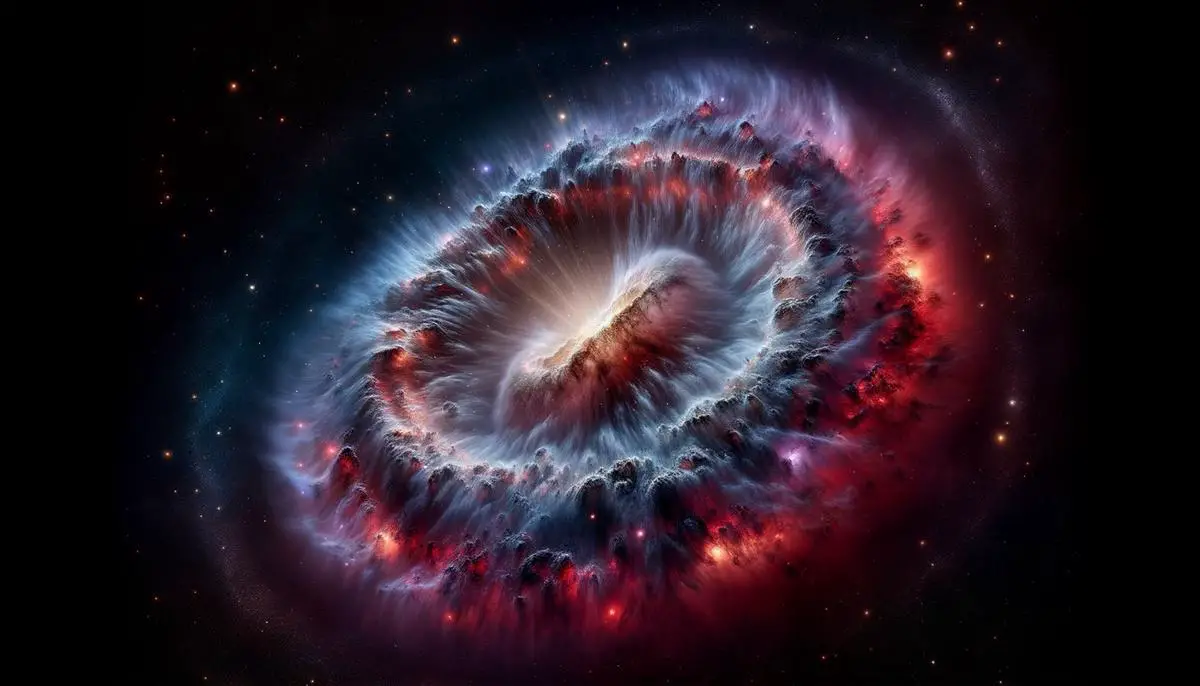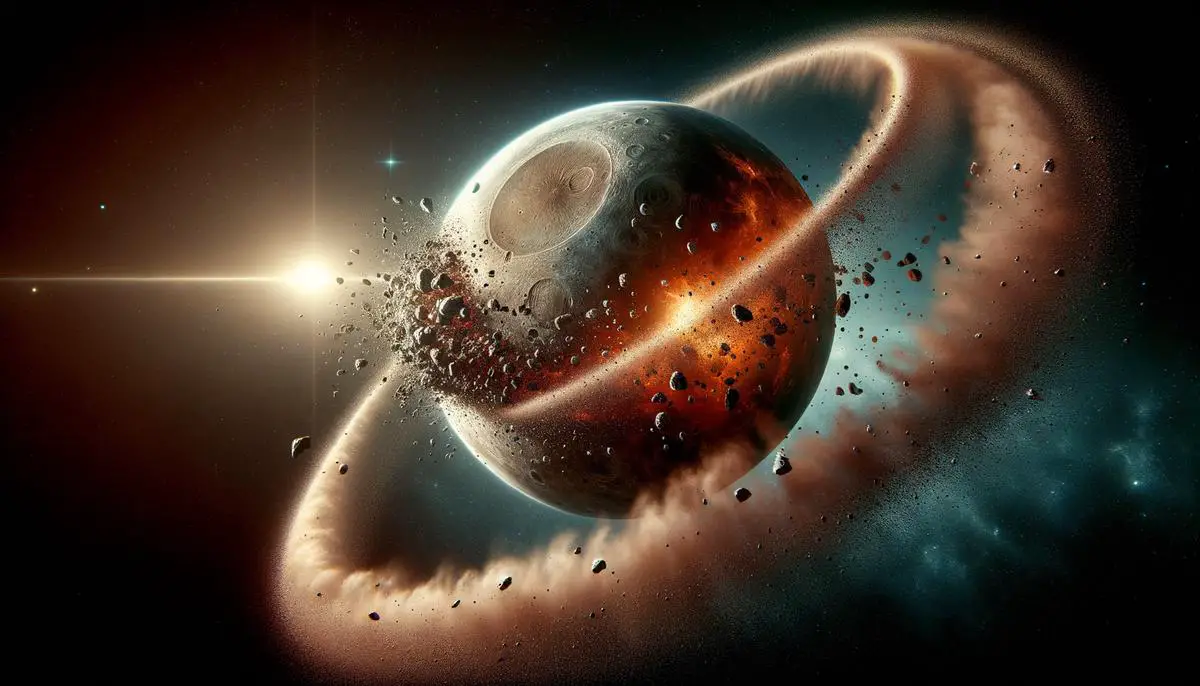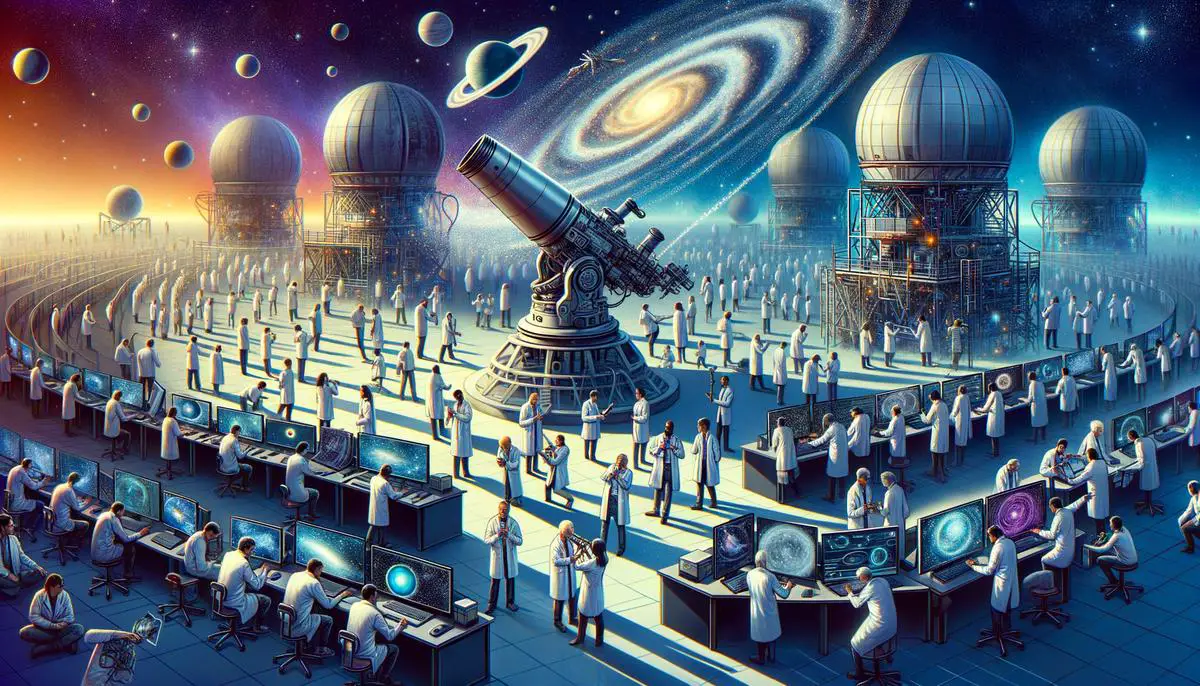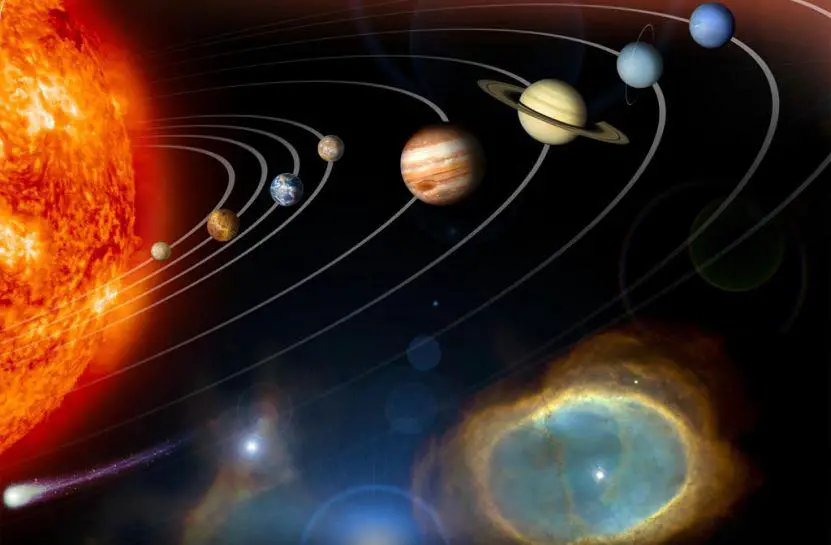From the vast expanse of a gas and dust cloud to the intricate dance of planetesimals and protoplanets, the formation of our solar system is a tale of cosmic transformation. The journey begins with a pre-solar nebula, catalyzed by a supernova, and unfolds through a series of collisions and accretions that shape the planets we know today. This account explores the processes that led to the birth of our solar system, offering insights into the events that have defined our celestial neighborhood.
The Pre-Solar Nebula and Initial Collapse
A giant cloud of gas and dust once hovered in space, containing the building blocks of our entire solar system. This pre-solar nebula was set in motion by a nearby supernova. The explosion of a dying star sent shock waves through the nebula, causing it to collapse.
This collapse wasn't instant. The process of contraction and cooling took millions of years. Eventually, the nebula became a tightly packed, rotating disk. At the center, a proto-sun began to form—a hot, dense ball that hadn't yet ignited nuclear fusion. It sat surrounded by a thin, rapidly twirling disk of gas and dust.
Within this spinning disk, close to the proto-sun, intense heat blew away lightweight gases and evaporated ices. Only rocks and metals could withstand the high temperatures. These materials began to clump together, forming ever-larger chunks.
In the cooler regions, further from the proto-sun, ices could survive. Here, planetesimals—small, almost-planet bodies—formed quickly. These icy chunks grew larger, gaining enough gravity to pull in surrounding gas and dust. The early giants of the solar system, like Jupiter and Saturn, started to take shape, growing massive and cloaking themselves in thick atmospheres of gas.
The pre-solar nebula's transformation from a loose cloud to a bustling disk filled with growing planets laid the foundation for our solar system. The proto-sun at the center would eventually ignite, becoming the star we know today, while the surrounding pieces would gather, clash, and combine, carving out the paths of the planets that now orbit our sun.

Formation of Planetesimals and Protoplanets
The early conglomerations of rock and ice within the pre-solar nebula gave rise to planetesimals—small, solid objects ranging from just a few miles to hundreds of miles in diameter. These planetesimals formed through a chaotic process of collisions and coalescence. They repeatedly crashed into one another, sticking together bit by bit, gradually forming larger bodies.
As planetesimals grew, they gained more gravitational pull. This newfound gravity allowed them to tug neighboring planetesimals out of their orbits, making collisions more frequent. The result was the birth of protoplanets, the building blocks of fully formed planets. These protoplanets ranged from the size of the Moon to that of Mars and, through further collisions and accretion, began to take shape.
Key Factors in Planetesimal and Protoplanet Formation:
- Gravitational forces: Crucial for attracting more material and driving runaway growth
- Collisions: Both constructive and destructive, reshaping and restructuring bodies
- Orbital dynamics: Influenced paths and interactions between growing bodies
In these collision-rich environments, few protoplanets emerged unscathed. Each major collision was a chance for restructuring, enhancing the complexity and diversity of chemical makeups. The material stripped away from impacts contributed to forming moons and rings around larger bodies as well.
As the proto-sun matured and began nuclear fusion, its luminance and stellar winds blew away the remaining lighter gases in the vicinity. This cleared space in the inner solar system, setting the stage for the rocky worlds to take up their defined orbits. Meanwhile, the outer regions continued to aggregate material, forming the gas giants cloaked in their dense atmospheres.
These early interactions amongst dust and rock set the foundation for the solar system as we know it. From humble planetesimals to ambitious protoplanets, each moment of collision and fusion carried forward the cosmic story of creation through chaos.
The Moon-Forming Impact
Among these early celestial events, one colossal encounter stands out—the giant impact that birthed our Moon. This cataclysmic event, known as the giant impact hypothesis, describes the dramatic collision between proto-Earth and a Mars-sized protoplanet, commonly referred to as Theia. This transformative event set the stage for many of the conditions we now take for granted on Earth.
"The giant impact hypothesis posits that roughly 60-175 million years after the solar system formed, Theia collided with the proto-Earth."
The colossal force of this impact sent a significant amount of debris, both from Theia and the proto-Earth, hurtling into space. The aftermath of this collision was a disk of molten rock and vaporized materials encircling the Earth.
In this swirling chaos, the material began to coalesce. The debris gradually clumped together under the influence of gravity, cooling and solidifying over time. This process paved the way for the formation of our Moon, which eventually settled into orbit around Earth.
Evidence Supporting the Giant Impact Hypothesis:
- Similarity in oxygen isotopes between lunar and terrestrial rocks
- Differences in elemental composition (e.g., potassium, zinc, sodium) due to impact vaporization
- Timing alignment with Earth's core formation, based on hafnium-tungsten isotope studies
In the immediate aftermath of the giant impact, Earth was a molten inferno, enveloped in a dense, turbulent atmosphere of vaporized rock. Yet, from this chaos emerged not just a more stable proto-Earth but also a brand-new satellite—the Moon. This serendipitous formation of our Moon has had profound implications for life on Earth. The Moon exerts a stabilizing influence on Earth's axial tilt, which could have hindered the development of life as we know it without its presence.
The giant impact hypothesis offers a profound example of how even the most chaotic events in the universe can lead to intricate results, influencing the trajectory of planets and life across billions of years. The story of Earth and its Moon—born from a cataclysm—is a tale of cosmic resilience and balance.

Late Heavy Bombardment and Planetary Migration
At approximately 4 billion years ago, our solar system experienced a dynamic and chaotic epoch known as the Late Heavy Bombardment (LHB). This period was marked by a fierce series of impacts that dramatically shaped the inner solar system. The LHB is thought to have been triggered by the migration of the giant planets—Jupiter, Saturn, Uranus, and Neptune.
The Nice model suggests that interactions between the giant planets and a surrounding disk of debris caused them to scatter inward and outward. Jupiter, with its massive gravitational influence, is thought to have moved inward slightly, while Saturn's outward migration led to a destabilizing effect on Uranus and Neptune, pushing them further out. This intricate dance caused a cascade of effects across the solar system, sending a deluge of debris inward toward the inner planets.
Effects of the Late Heavy Bombardment:
- Reshaping of planetary surfaces
- Formation of vast craters and basins
- Delivery of water and volatiles to Earth
- Potential influence on early life development
On Earth, this bombardment wasn't entirely destructive; it could be said to have been a critical ingredient for life. Many of these incoming objects were rich in water and other volatiles. As these icy bodies and carbon-rich asteroids collided with the young Earth, they delivered essential compounds that would later be crucial for the development of life. The impacts brought significant quantities of water, which accumulated to form our planet's first oceans.
Geological evidence for the LHB comes from the lunar samples returned by the Apollo missions. The lunar highlands are heavily cratered, indicative of an intense period of bombardment. Similar surface features are seen on other inner solar system bodies, suggesting a shared story of early impacts. These collisions also left behind clues in the form of isotopic anomalies, providing planetary scientists with a way to date these events and understand their broader implications.
While the LHB reshaped the inner solar system, the migrating giant planets had profound effects in their new neighborhoods as well. The redistribution of debris led to the clearing of the solar system, sweeping many smaller objects into new orbits, some of which found stable homes in the asteroid belt or were ejected entirely into the Kuiper Belt and the Oort Cloud.
Saturn's interactions with Jupiter likely played a critical role in preventing another potential giant planet from forming between them. The gravitational influences of these migrating giants also helped shape the orbits of Jupiter's and Saturn's moons, creating a diverse array of celestial bodies that adds intricate detail to our understanding of the solar system's evolution.
In summary, the Late Heavy Bombardment was a hallmark of the young solar system's restless dynamism, driven by the migration of the giant planets. These monumental events fundamentally shaped the characteristics of the inner planets and delivered the life-giving compounds that make Earth what it is today. While this era was marked by chaos and destruction, it ultimately led to stability and the conditions necessary for life to flourish.

Modern Understanding and Remaining Questions
As our understanding of the cosmos has evolved, so too has our conception of how the solar system formed. Advanced telescopes and sophisticated computer simulations continue to uncover the intricacies of planetary formation and the factors that governed the early solar system. Giant impacts played a pivotal role in shaping planetary bodies, with Earth potentially experiencing multiple such collisions, each contributing unique geological and atmospheric characteristics.
Modern observations confirm that giant impacts can dramatically influence a planet's trajectory, scale, and composition. Mercury's oversized metallic core and Uranus's extreme axial tilt likely resulted from past massive collisions. These impacts aren't reserved for rocky planets alone; even gas giants bear witness to such cataclysmic events during their formative years.
The clearing of the solar nebula's remaining gas is another crucial aspect of planetary formation. Stellar winds driven by the proto-sun played a significant role in dispersing this gas. Observations from modern star-forming regions, such as those around the TCha system, provide evidence for this process. The James Webb Space Telescope has corroborated these findings by analyzing the spectral lines of ionized elements like argon and neon1.
Remaining Questions in Planetary Formation
- Why do only some planetary systems host gas giants?
- How do the atmospheres of volatile-rich exoplanets interact with their host stars over billions of years?
- What precise chain of events allowed Earth to evolve into the life-supporting haven it is today?
The intersection of computational studies with observational data propels us closer to understanding the origins of celestial bodies. Supercomputers simulate various outcomes of proto-planetary collisions, migration patterns of nascent worlds, and dispersal dynamics of solar nebulae. These simulations offer predictive models that we continually refine with real-world celestial data.
New missions to collect lunar, Martian, and asteroid samples promise further revelations. By comparing these cosmic relics, we aim to decipher more details of the solar system's first turbulent chapter. Improved accuracy and precision of isotopic analyses may shed light on enigmatic isotopic anomalies and elemental discrepancies2.
"The journey to fully grasp the formation and evolution of the solar system is ongoing, bearing both the weight of historical mysteries and the promise of future discoveries."
With each revelation, we not only understand our cosmic origins better but also refine our quest for knowledge about the ever-expanding universe.

The story of our solar system's formation is one of cosmic resilience and balance. From the initial collapse of the pre-solar nebula to the giant impacts that shaped planetary bodies, each event has contributed to the dynamic and diverse system we observe today. As we continue to uncover more about these early processes, we gain a deeper appreciation for the conditions that have allowed life to flourish on Earth.
![]()
